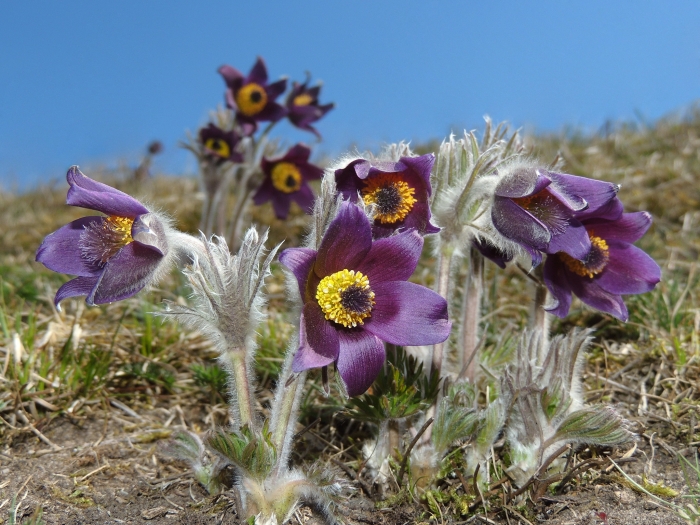Mountain Pasque Flower
(Pulsatilla montana)
Mountain Pasque Flower (Pulsatilla montana)
/
/

xulescu_g
CC BY-SA 2.0
Image By:
xulescu_g
Recorded By:
Copyright:
CC BY-SA 2.0
Copyright Notice:
Photo by: xulescu_g | License Type: CC BY-SA 2.0 | License URL: https://creativecommons.org/licenses/by/2.0/ | Uploader: xulescu_g | Publisher: Flickr |





















Estimated Native Range
Summary
Pulsatilla montana, commonly known as Mountain Pasque Flower, is a herbaceous perennial native to alpine meadows and stony slopes of the mountainous regions of Southern Europe. It typically grows to a height of 0.3-0.6 feet (0.09-0.2 meters) and a width of 0.3-0.5 feet (0.09-0.2 meters). This plant forms a low clump of finely dissected leaves, and its flowers are bell-shaped, blooming in various shades including cream, purple, and white during the spring. The flowers are followed by distinctive seed heads with silky plumes that are quite ornamental.
Mountain Pasque Flower is valued for its early spring blooms and its ability to thrive in rocky, well-drained soils. It is often used in rock gardens, alpine houses, and as a border plant in areas that mimic its native mountainous habitat. While it prefers full sun, it can tolerate part shade, especially in warmer climates. It requires moderate watering and should not be overwatered to prevent root rot. Pulsatilla montana is generally low maintenance but can be susceptible to slug and snail damage. It is also important to handle the plant with care, as all parts are highly toxic if ingested and can cause skin irritation on contact.CC BY-SA 4.0
Mountain Pasque Flower is valued for its early spring blooms and its ability to thrive in rocky, well-drained soils. It is often used in rock gardens, alpine houses, and as a border plant in areas that mimic its native mountainous habitat. While it prefers full sun, it can tolerate part shade, especially in warmer climates. It requires moderate watering and should not be overwatered to prevent root rot. Pulsatilla montana is generally low maintenance but can be susceptible to slug and snail damage. It is also important to handle the plant with care, as all parts are highly toxic if ingested and can cause skin irritation on contact.CC BY-SA 4.0
Plant Description
- Plant Type: Herb
- Height: 0.3-0.6 feet
- Width: 0.3-0.5 feet
- Growth Rate: Moderate
- Flower Color: Purple
- Flowering Season: Spring
- Leaf Retention: Deciduous
Growth Requirements
- Sun: Full Sun, Part Shade
- Water: Medium
- Drainage: Fast
Common Uses
Bee Garden, Deer Resistant, Low Maintenance, Showy Flowers
Natural Habitat
Alpine meadows and stony slopes of mountainous regions in Southern Europe
Other Names
Common Names:
Scientific Names: , Pulsatilla montana, Anemone australis, Pulsatilla montana subsp. dacica, Anemone pulsatilla var. australis, Pulsatilla jankae var. vojvodinii, Pulsatilla montana var. vojvodinii,
GBIF Accepted Name: Pulsatilla montana (Hoppe) Rchb.